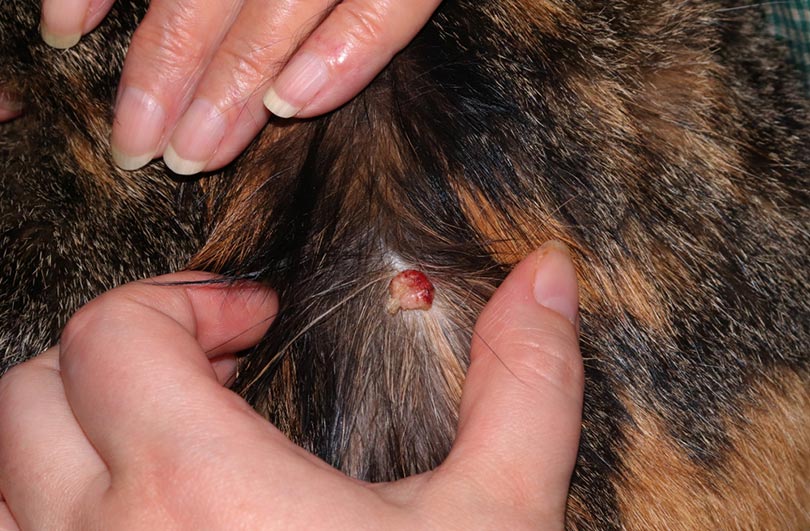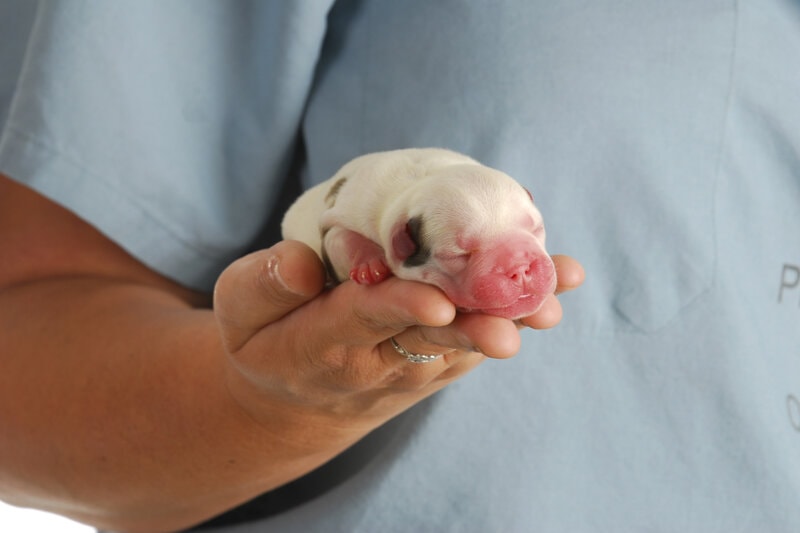Can Otocinclus Catfish and Betta Fish Live Together? (Vet Answer)
By Dr. Luqman Javed, DVM (Vet)
Updated on
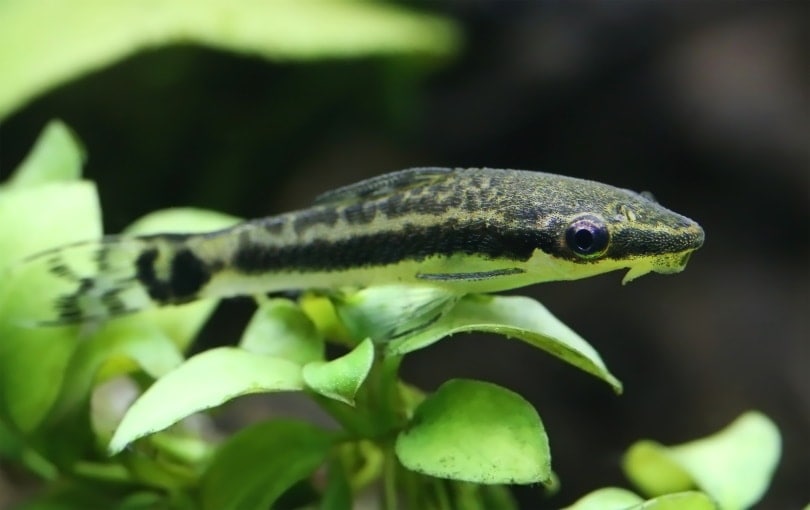
Click to Skip Ahead
Bettas can be housed in some community setups with the appropriate tank mates. Otocinclus catfish (often referred to as “otos”) are small, docile shoaling herbivores that are a welcome addition to many tropical fish aquariums. If you’re wondering whether otos and bettas can coexist, the good news is that otos and bettas are indeed compatible, and in the correct setup, they can usually be housed together successfully.
Read on as we explore the dynamics of creating a community aquarium with a betta and their compatibility with otos.
Can Bettas Be Housed in a Community Tank?
The sight of bettas in individual tanks in pet stores leads many people to believe that they should only be housed alone. This is somewhat true but confusing. Male bettas are instinctively territorial and aggressive towards their conspecifics. Interestingly, bettas bred in captivity as pets are generally more aggressive than their wild counterparts because they were initially bred with aggression as a desired trait.
However, bettas are also bred to have fancy fins and flowing tails and are naturally accustomed to very slow-moving bodies of water, making them weak swimmers. Therefore, though they may be aggressive towards other bettas, they are usually not much of a threat when confronted with other species of popular pet fish because they are slow swimmers that have plenty of fins and tails for a would-be bully to nip at.
Therefore, when considering a community setup for a betta, care should be given to ensure that the other fish aren’t a threat to the betta and they aren’t fish which a betta might misconstrue as a rival. The checklist for housing a betta with other fish includes the following conditions:
- If you have a male betta, there shouldn’t be other bettas in the tank (male or female)
- The other fish in the aquarium should be tropical fish
- The other fish in the tank should not have long flowing fins which your betta may misconstrue as a rival (for example, fancy guppies are not a good mix with bettas)
- The other fish in the aquarium should be peaceful and not aggressive or territorial
- The other fish in the aquarium should not be top-dwellers (such as dwarf gouramis)
- The aquarium should be large enough to accommodate all the fish while meeting the needs of every species
- The other fish in the aquarium should not be too large in size when compared to your betta
Please note that all these criteria should be met before attempting to house bettas in a community setups.
In addition to the above, the following factors may be considered to increase the chances of a successful community setup:
- It is best to add the betta as the last fish to the aquarium. This way, the betta may view the tank mates as fish that already exist in a brand new territory. A betta that lives in a tank for a while with no community fish might be confused if fish are suddenly added into his territory, and might be more curious about their presence. This may result in unwanted incidents (such as a bite from either your betta or from the new fish).
- Aggressiveness is partly inherited in bettas. Try to opt for a betta that has been housed with other fish before and is somewhat docile. Bettas that are overly aggressive should be housed alone, as they may not be good candidates for a community setup
Female bettas require the same checklist, with one exception: they should either be the only betta in an aquarium, or should be housed in a sorority of at least five or more females, all about the same size and age, added to the aquarium at the same time.
Where do otos fit in all this? Let’s explore the otocinclus catfish and their compatibility with Bettas next.
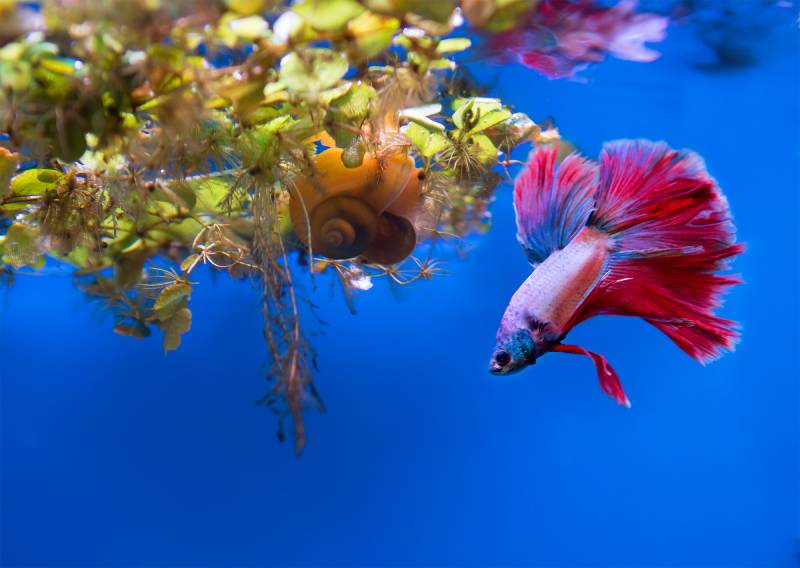
Otocinclus Catfish & Betta Compatibility
Though they are native to a different part of the world than bettas, otos are also tropical fish. They are small, peaceful schooling fish. They are herbivores and mostly feed on algae, a trait that sets them apart from many other catfish species (that are usually omnivores).
Their peaceful nature, low bioload, and their ability to adapt to a wide range of tropical temperatures makes them very popular for fishkeepers that are seeking a natural solution for algae problems. They are especially useful when dealing with brown algae blooms (common in new aquariums), as they are among the few fish that readily eat brown algae.
Interestingly, like bettas, otos have the ability to breathe atmospheric oxygen if needed. However, they don’t possess a labyrinth organ. Instead, they have a space in between their esophagus and stomach which can hold air they directly swallow from the water’s surface.
Their key requirements in the aquarium setup can be summarized as follows:
| Overall Difficulty | Moderate, has some specific requirements |
| Maximum Size | 1–2 inches (2.5–5.5 cm), depending on species |
| Water Current Preference | Low to moderate current |
| Area Inhabited | Primarily bottom dwellers, tend to stay near plants. Often rest on leaves. |
| Social Requirements | Schooling fish, should be housed in groups of 5–6 or more |
| Temperament | Peaceful when in a school |
| Diet | Herbivore |
| Temperature Requirement | 72–84°F (22–29°C) |
| pH requirement | 6.0–7.5 |
| Space Required | A 10-gallon aquarium should be considered the minimum for a school of six. |
| Other Requirements | Requires live plants and vegetation; should be fed sinking foods appropriate for an herbivore, such as algae wafers
Should not be housed with sharp gravel or sharp substrate. |
Otos tick just about every box needed to be considered suitable tank mates for a betta. Not only can they coexist in a similar environment, but they are exceptionally peaceful, making them fantastic tank mates for a betta. When housing these fish with a betta, it’s best to keep your tank at a temperature of around 82–83°F (approximately 28°C). This temperature is best for bettas (their ideal temperature is 82.4°F). A pH of around 7.0 is considered appropriate for both fish.
They naturally have a dull coloration which a betta wouldn’t misconstrue as that of a rival, and as an added bonus, they have an armored layer on their back, which can protect them from an inadvertent bite from a curious betta.
Being in a school comes with an added advantage: a curious betta may not know which oto to inspect, as it is difficult to single out a target from a school of fish. They are also relatively fast swimmers when compared to a betta.
All these advantages are further augmented by the fact that they are likely not going to show any interest in whatever your betta eats, as they are herbivores.
Tips for Housing & Tank Size Requirements
Though otos and bettas are indeed compatible, there are a few more tips you can use when housing them together to add even more layers of safety to your aquarium.
- As mentioned before, it’s best to add your betta into an aquarium that already has Otos in it.
- Closely monitor your fish for the first few days of cohabitation to ensure that they are getting along well.
- A heavily planted aquarium provides each fish species with plenty of cover, offers natural filtration, and is a welcome addition to any aquarium.
- Try feeding your fish at different sides of the aquarium. Begin by feeding your betta on one side, and while your betta is occupied, drop your oto’s sinking food to the other side of the aquarium.
- Fresh foods you place in your aquarium for your otos (such as a piece of cucumber) should be carefully pinned down and discarded before it spoils and degrades your water quality. The same is true for any live food or treats you feed to your betta.
You’ll also need to make sure the aquarium you choose is appropriately sized for your fish.
| For one male betta and six otos | A minimum of 15 gallons is recommended; upsize by approximately 2 gallons per additional oto. |
| For five female bettas and six otos | A minimum of 25 gallons is recommended; consider upsizing by at least 2 gallons per additional female betta or oto. |
Ensure your aquarium’s filter can accommodate at least twice the volume of water in the aquarium. For example, a 15-gallon aquarium requires a filter rated at least 30 gallons. All aquariums should be cycled, heated, and filtered before adding in your fish.
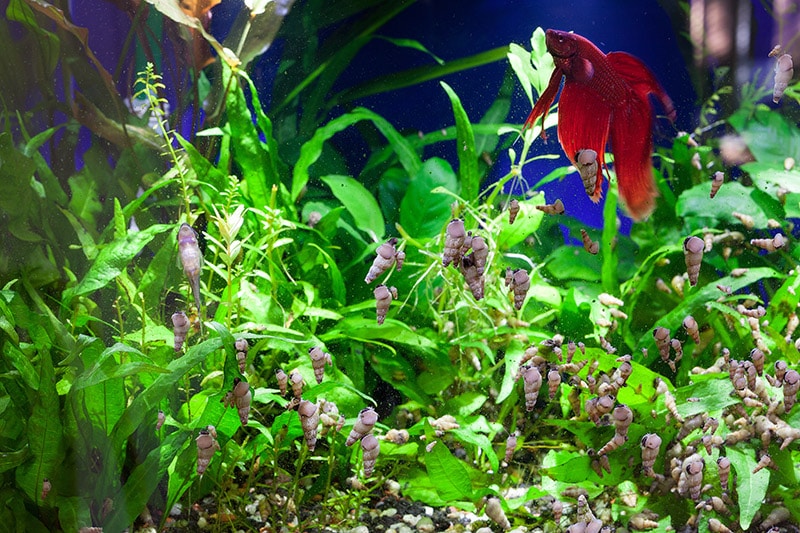
Other Fish That Are Compatible With Both Bettas & Otos
If you’re feeling even more ambitious about a community setup, and have an aquarium that’s large enough to accommodate additional species, these fish can work with both bettas and otos:
- Rummynose tetras
- Rummynose rasboras
- Emperor tetras
- Harlequin rasboras
- Apple snails
- Emperor tetra
Please note that while neon tetras are considered compatible tank mates, they sometimes carry a disease known as neon tetra disease. This disease has no cure, and while not exclusive to neon tetras, it is most commonly found in them because they are often mass bred in less-than-ideal, stressful conditions.
For this reason, other tetras are recommended as tank mates. Cardinal tetras aren’t aggressive towards bettas but anecdotally may be confused as a rival by some bettas (owing to their long, bright red line). However, they are very resistant to neon tetra disease.
Corydoras, while usually peaceful, possess a small stinger spine near each eye. If startled, they may quickly use the spine to poke at a perceived threat, injecting a venom that may, at times, kill a fish. This venom is fairly harmless for humans (but you may feel the sting). For this reason, though they may be considered compatible with a betta, they aren’t as risk-free as the other options listed above.
Always quarantine new fish (and plants) for at least 4–6 weeks before housing them in an existing community aquarium. When housing multiple tropical fish together, it’s best to go for a pH of around 7.0, as this is usually acceptable by the overwhelming majority of them. Temperature requirements should be catered to your betta, as the fish mentioned here either prefer the same temperature or can easily adapt to it (whereas bettas have poor cold tolerance).
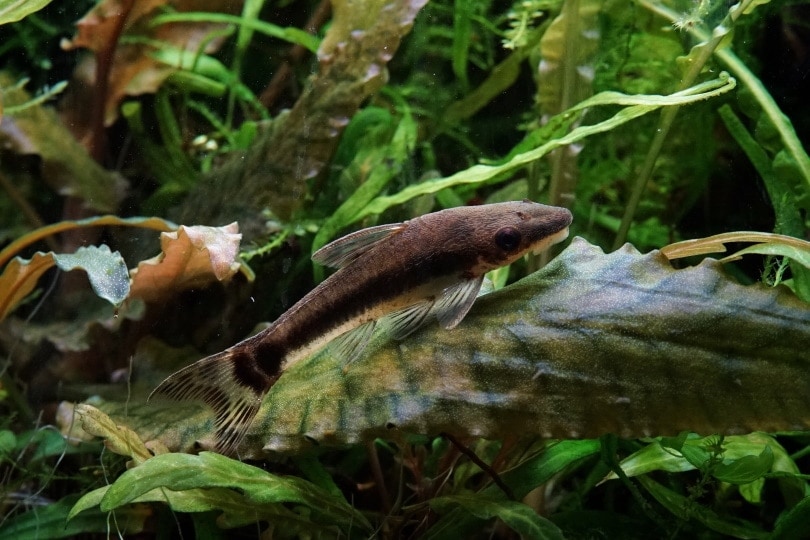
Fish to Avoid Housing With Bettas & Otos
Navigating the intricacies of a pet store’s options can indeed be tricky, and at times, you would want to ensure that you don’t house incompatible fish with your betta and otos. Here are some fish commonly found in pet stores you should avoid:
- Any cichlid
- Dwarf gouramis
- Fancy guppies
- Goldfish (any variety)
- Plecos
- Chinese algae eater
- Flying fox
- Whiptail catfish
- Red-tailed black shark
- Rainbow shark
- Endler
- Black skirt tetras
- Tiger barbs
Though plecos are often considered peaceful, they tend to get territorial and aggressive as they age and therefore aren’t considered good additions to peaceful aquatic environments. Also, contrary to popular belief, plecos are not herbivores. In addition, plecos have a very high bioload and are exceptionally messy (even though they are marketed as “cleaner fish”). Plecos also have spines that can sometimes get caught in a sponge filter.
Despite its name, the Chinese algae eater only eats algae effectively when small. It tends to grow very large and becomes aggressive as it matures and may attack your other fish. It is also considered a poor tank mate for otos when young, as it may out-compete them for the algae in an aquarium.
It is also best to avoid fish most optimally kept in a species-only tank. Examples of such fish are discus.
Conclusion
Though housing a betta in a community setup might seem tricky, there are options for tank mates that can be successfully housed with bettas. Otocinclus catfish are considered one of the best tank mates for bettas. With the correct setup and the needs of each fish, it is often quite easy to successfully establish a community setup with these two species of fish. We’ve also explored some other tank mate options, as well as fish, to avoid placing with your betta.
Featured Image Credit: Swapan Photography, Shutterstock




